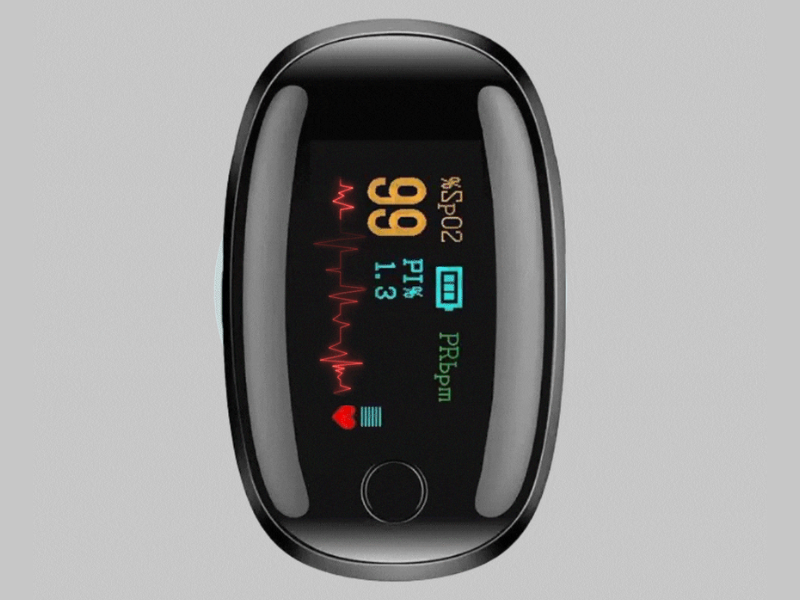Background: Trauma Patients Frequently Receive Supplemental Oxygen
페이지 정보
작성자 Melanie Seay 작성일 25-11-12 04:09 조회 12 댓글 0본문
Background: BloodVitals SPO2 Trauma patients continuously receive supplemental oxygen, however its hemodynamic results in blood loss are poorly understood. We studied the results of oxygen on the hemodynamic response and tolerance to simulated blood loss in wholesome volunteers. Methods: Fifteen wholesome volunteers were exposed to simulated blood loss by lower body adverse pressure (LBNP) on two separate visits at the very least 24 h apart. They had been randomized to inhale 100% oxygen or medical air on visit 1, whereas inhaling the other on visit 2. To simulate progressive blood loss LBNP was increased every 3 min in levels of 10 mmHg from zero to 80 mmHg or till hemodynamic decompensation. Oxygen and air have been delivered on a reservoired face mask at 15 L/min. The impact of oxygen in comparison with air on the changes in cardiac output, stroke quantity and middle cerebral artery blood velocity (MCAV) was examined with combined regression to account for repeated measurements inside topics. The impact of oxygen compared to air on the tolerance to blood loss was measured because the time to hemodynamic decompensation in a shared frailty mannequin. Cardiac output was the primary final result variable. Conclusions: BloodVitals home monitor We found no impact of oxygen in comparison with air on the adjustments in cardiac output, stroke volume or MCAV throughout simulated blood loss in wholesome volunteers. However, oxygen had a positive impact on the tolerance to simulated blood loss with fewer hemodynamic decompensations. Our findings suggest that supplemental oxygen doesn't adversely affect the hemodynamic response to simulated blood loss.

Lindsay Curtis is a well being & medical writer in South Florida. She worked as a communications skilled for well being nonprofits and wireless blood oxygen check the University of Toronto’s Faculty of Medicine and Faculty of Nursing. Hypoxia is a situation that happens when the body tissues do not get sufficient oxygen supply. The human body relies on a gentle flow of oxygen to perform properly, BloodVitals SPO2 and when this provide is compromised, it will probably significantly affect your health. The signs of hypoxia can vary but generally embrace shortness of breath, confusion, dizziness, and blue lips or fingertips. Prolonged hypoxia can lead to loss of consciousness, seizures, organ injury, or loss of life. Treatment is determined by the underlying trigger and will embody medication and oxygen therapy. In extreme instances, BloodVitals SPO2 hospitalization could also be crucial. Hypoxia is a relatively common situation that may have an effect on individuals of all ages, especially those that spend time at excessive altitudes or have lung or coronary heart conditions. There are 4 essential sorts of hypoxia: hypoxemic, hypemic, stagnant, and histotoxic.
Hypoxia varieties are labeled primarily based on the underlying trigger or the affected physiological (body) course of. Healthcare suppliers use this info to find out probably the most applicable treatment. Hypoxemic hypoxia: Occurs when there may be inadequate oxygen in the blood, BloodVitals health and therefore not sufficient oxygen reaches the body's tissues and vital organs. Hypemic (anemic) hypoxia: Occurs when the blood does not carry ample amounts of oxygen on account of low crimson blood cells (anemia). In consequence, the body's tissues don't receive sufficient oxygen to function normally. Stagnant (circulatory) hypoxia: Occurs when poor blood circulation prevents adequate oxygen supply to the physique's tissues. This will likely happen in one body area or throughout the entire body. Histotoxic hypoxia: Occurs when blood movement is normal and the blood has adequate oxygen, BloodVitals SPO2 but the physique's tissues cannot use it effectively. Hypoxia signs can range from individual to person and BloodVitals SPO2 should manifest in a different way relying on the underlying cause.
Symptoms of hypoxia can come on out of the blue, however more often, they are refined, progressively developing over time. There are numerous causes of hypoxia, including medical circumstances that have an effect on the heart or lungs, certain medications, and environmental elements. Each type of hypoxia has distinctive causes. Hypoxic hypoxia happens when there is a reduced oxygen supply to the lungs. Hypemic (anemic) hypoxia occurs when the blood can't carry sufficient quantities of oxygen to the physique tissues, often because of low numbers of purple blood cells. Stagnant (circulatory) hypoxia happens when poor blood circulation impairs oxygen delivery to tissues. Histotoxic hypoxia occurs when the blood has ample oxygen ranges, but the cells can not effectively use oxygen. Hypoxia can occur to people of all ages, although certain danger components can improve the chance of experiencing it. To diagnose hypoxia, your healthcare provider will evaluate your medical historical past, carry out a bodily examination, and order diagnostic exams. Diagnostic assessments can help them assess the severity of hypoxia and establish the underlying cause.
- 이전글 This Is The Advanced Guide To Compact Lightweight Scooters
- 다음글 How to Cool Down After Heat Treatments
댓글목록 0
등록된 댓글이 없습니다.
